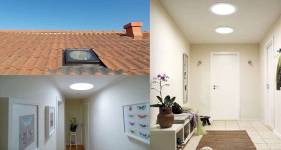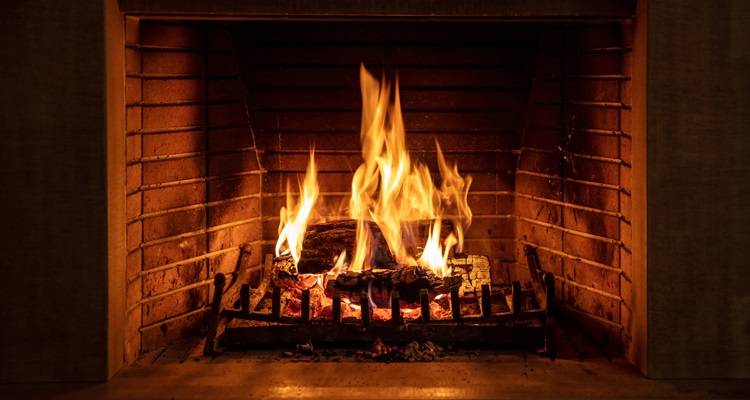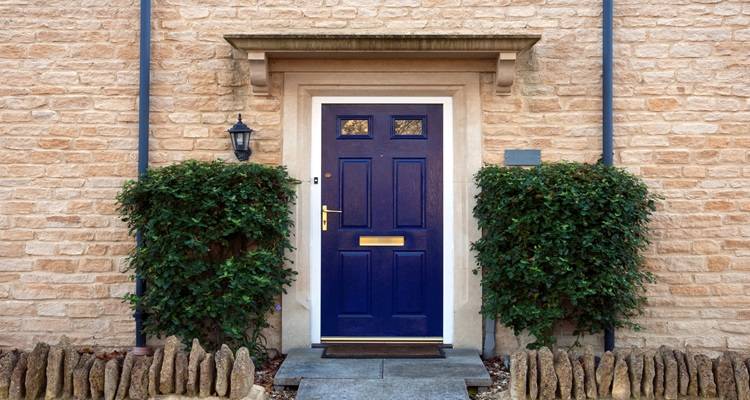Renovating a Staircase Cost
- The average cost of renovating a staircase is around £140
- The job will take approximately 2 - 3 days to complete
- A complete pricing breakdown which includes types of renovations to you may need, along with what such a task usually involves
- How long the job should approximately take and a general overview of what kind of jobs can be performed
- How to find and hire a carpenter or painter and decorator
Whether your staircase is in disrepair or you want to bring it into the twenty-first century, you'll need to know how much it will cost overall. You'll also want to know whether you can do it yourself or if it's best left to the pros.
To give you a rough idea, the cost of a staircase remodel will be around £140 on average.
Are you ready for a quote for your job?
We have a range of local carpenters ready to offer you a free quote!
You can also find and hire a painter and decorator to help, depending on your staircase refurbishment needs.
We'll go over everything that you need to understand about renovating an old staircase in this article into a new modern staircase.

£140
Table of Contents
- How Much is a Staircase Refurbishment?
- Supply Only Costs
- Additional Costs
- Labour Costs and Timescales
- Cost Factors of Renovating a Staircase
- What's Involved in Renovating a Staircase?
- Can I Renovate a Staircase Myself?
- Building Regulations & Planning Permission for Renovating a Staircase
- Types of Staircase Renovations
- Hiring Contractors for Renovating a Staircase Checklist
- FAQs
- Sources
How Much is a Staircase Refurbishment?
The renovation price is determined by several factors, including the size and layout of the staircase, the number of newels posts and turns, the size of the landing, and whether your staircase is by a wall or open on both sides.
So, how much does a staircase renovation cost?
Renovating a staircase prices can vary. Depending on your requirements, a complete stair renovation could be prohibitively expensive. On the other hand, if a new staircase is structurally feasible, it may be less expensive.
The longer your to-do list, the more expensive your old staircase renovation will be. For example, a new handrail or bannister will cost around £45 and £120, while new spindles will cost around £90 on average. You'll also have to pay for the time of a skilled tradesperson.
The average carpenter's day rate is around £200. However, it will be much less expensive if you simply want to spruce up your stairs with a fresh coat of paint and a new carpet. Painting and decorating cost approximately £180 to £200 per day, while new flooring costs approximately £18.50 per square metre.
Hi. I’m thinking of improving the look of my home’s staircase but I’m not quite sure how to go about it. See, I’ve considered, for example, adding wallpaper to the front-facing parts of the steps. What sort of wallpaper patterns/colours would work here and is there anything in particular to consider when applying wallpaper to stair risers? As in, is the process any different than adding wallpaper to a wall (except for cutting it out so that it will fit on the stair risers of course). Hope all this makes sense. Looking forward to hearing back!
Staircase Prices
| Job Type | Cost |
|---|---|
| A regular staircase's balustrade to be removed and replaced | £700-£800 |
| Installing stair cladding on a standard staircase | £600-£900 |
| One usual, straight staircase to be replaced (softwood) | £700-£800 |
| Measure, construct, install, and eliminate the old stairwell | £2000-£4000 |
Supply Only Costs
With some DIY skills and a dash of imagination, you can renovate a staircase without spending a small fortune. A staircase is frequently a focal point in your home. It's usually one of the first things you notice when you walk into your home, so using it as a focal point makes sense.
However, there is a common misunderstanding that if your staircase is old and tired, or simply not to your taste, you are stuck with it, but this is not the case! We'll review all the materials you'll need to renovate your staircase here.
You can buy carpet clippers to cut away any unwanted carpet around your staircase this will cost you £7 - £15, you will also need a measuring tape which will cost you £1 - £5, you can then buy handrails for £65 - £120 depending on the quality you would like.
A base rail would set you back £11 - £15 once again, depending on the quality, and spindles will cost you around £4 - £6 each; therefore, the total cost would depend on how many you will need.
A new carpet with no installation costs will cost around £7 - £16 for 1m2. However, you may decide you want to install new clad onto your staircase, this will cost you £12 - £40, or maybe your staircase needs a new pick of paint which will cost £18 - £40.
Additional Costs
New Staircase
The average cost of a new staircase is around £1500, which includes the removal of your old one and the full installation of the new one.
If you get a custom staircase, the price could skyrocket. This includes both labour and material costs. The final price will be determined by the staircase type, the installation size, and the materials used.
If you would like further information, please refer to our guide on the costs of installing a new staircase.
Carpet Fitting
It can be difficult to calculate the cost of a new carpet. When you first look at carpet prices, they may appear very low. However, there are numerous ways for the price to rise. Also, remember to factor in the cost of the carpet installer and the underlay. So, when you see a low carpet price, remember that it does not cover everything.
When you factor in all the materials and carpet installation costs, the price of a new carpet in a small room will start at around £210. On the other end of the spectrum, a high-quality expert carpet in a mid-sized room can cost up to £3,360.
The sort of carpet and the material used can significantly impact the price. The underlay has a minor cost impact but should not be overlooked because it affects the feel and life of the carpet.
Twist polypropylene carpets are the most popular. This is because they are reasonably priced, long-lasting, and come at various price points. For example, a mid-sized room with this type of carpet could cost as little as £250 or as much as £1,760.
If you would like further information, please refer to our guide on the costs of laying carpet.
Painting a Room
Painting a room is a relatively simple task for any painter or decorator, and it is something that any DIY person can do. But how much would it cost to hire a professional? Of course, this is almost entirely determined by the size of the room.
A standard 4m by 3m room would take a couple of days to paint completely, including woodwork and coving. Outside of London, most decorators charge around £150 to £200 per day, so your total labour cost would be around £300 to £400. Adding another £50 for the paint results in a total cost of £400.
Hiring a nearby painter and decorator is an excellent way to avoid DIY disasters and stress. When getting quotes from painters, remember that they assume you will remove all furniture from the room, and there will be no wallpaper to strip.
If you would like further information, please refer to our guide on the costs of painting a bedroom.
Painting Skirting Boards
The cost of having a contractor paint your skirting boards is affected by several factors, the most important of which is labour. Painting is a labour-intensive job, which means that while the materials are relatively inexpensive, the job still requires significant time, care, and attention.
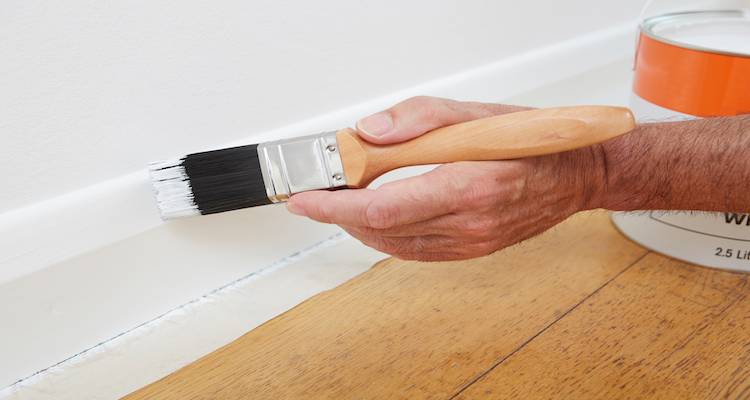
As previously stated, painting skirting boards can be difficult and time-consuming, especially when there are new or wallpapered walls to avoid. Painting skirting boards costs around £200 on average for a basic 3m x 3m room, with materials costing about £50 and labour accounting for the leftover £150.
If you would like further information, please refer to our guide on the costs of painting skirting boards.
Plaster a Room
If your home's interior plaster looks worn and redecorating never seems to produce a satisfactory result, it's time to have the plaster reissued to provide a clean, smooth foundation for your decorating efforts.
The cost of plastering will be determined by the amount and complexity of the work to be done. A patch repair, for example, may cost between £70 and £130, whereas an over skim may cost between £150 and £200.
The general plastering cost will also vary depending on room size, with a small room costing £400 to £700, a medium-sized room costing £800 to £1100, and a large room costing £1200 to £1500.
The cost may also vary depending on the plaster you select, as some homeowners may prefer a low-cost plaster while others prefer a long-lasting premium plaster.
If you would like further information, please refer to our guide on the costs of plastering an indoor wall.
Labour Costs and Timescales
There are many labour costs included in the overall cost of your renovation. Here we will go over the different labour costs and timescales.
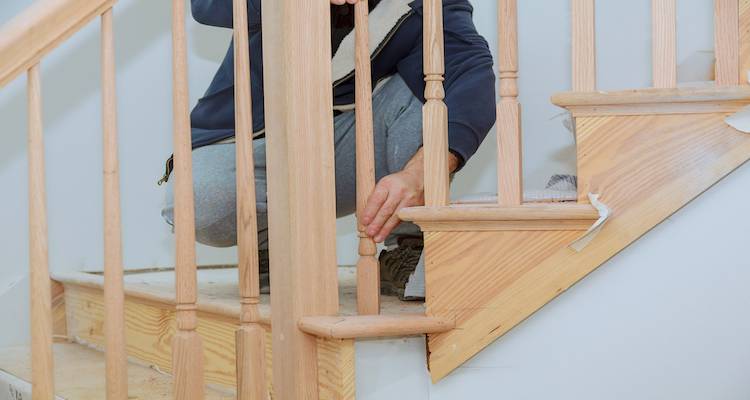
Carpenter
The labour cost will vary depending on where the carpet is being installed. A simple rectangular room will cost between £60 and £80, depending on the size. The job usually takes 2 to 4 hours. The cost and time will increase if the room has many alcoves or is an unusual shape.
Staircases are difficult and time-consuming, which means they can be more expensive. The more turns there are in the staircase, the higher the cost. So you can expect to pay between £75 and £120. Carpet installation on a staircase typically takes 12 hours.
When it comes to carpet installation, it can be difficult to predict how long it will take, so it is not uncommon for the work to take longer or shorter than expected, but in most cases, this will not impact the cost of the work.
Painter
A day rate for a painter typically ranges between £100 and £300. Smaller stairwell painting jobs typically cost around £15 and £40 per hour. Daily rates for tradespeople range between £150 and £300, with fees in London and the South-East or sometimes approaching, if not increasing, the higher amount.
Because paint must dry between layers, the type of paint used may influence how long it takes to finish each room. As a result, painters frequently collaborate on larger works.
Hiring a single contractor might have appeared to be the most cost-effective option. However, this almost always means that the job will take more time, save little time, and, in some cases, cost more. It takes about 8 hours total, spread out over four days.
Labourers
When estimating the cost of a job, the cheapest type of tradesman, a labourer, must not be overlooked. A specialist will usually provide their labourer; however, you should know the costs associated with hiring them.
A simple labourer's day rate is usually between £60 and £80 per day. They are used for heavy lifting, material moving, and jobs that do not require a particular skill.
Cost Factors of Renovating a Staircase
When renovating a staircase here, there are multiple cost factors; we will run you down to what could increase your overall cost.
Materials Used
Hardwoods, such as oak, are typically much more expensive than softwoods. Oak is very popular among British homeowners, but because many stairs are now carpeted, it doesn't matter much from a visual standpoint.
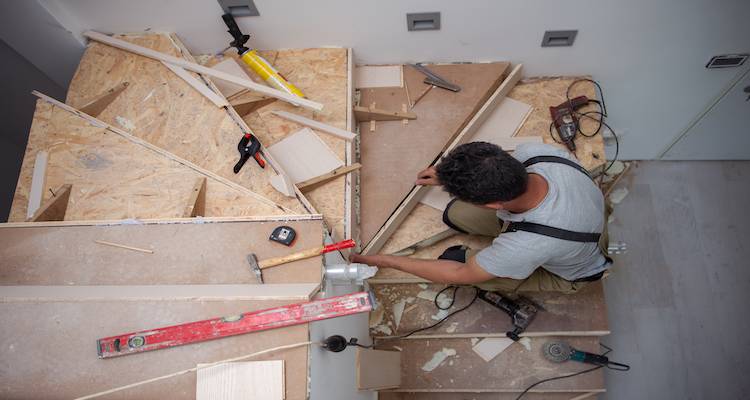
Oak is frequently used when revealed in more expensive properties. If carpet is used, joiners will often use engineered wood products because they are less expensive and stronger. MDF, plywood, and chipboard are examples of these products. Stairs in houses built before the 1990s were frequently made of softwoods such as pine.
Site Access
Tradesmen who enter your property must have easy access to the building to transport materials to the job site and through doors. This affects the time tradesmen must spend on-site and, as a result, labour costs.
Existing Staircase Removal
Please keep in mind that the prices listed above do not include the removal of your existing staircase, so ensure you discuss this with the contractor or expert you hire.
Fee for Building Control Officer
A Building Control Officer must inspect and approve your staircase before signing it off if everything meets Building Regulations. You should budget around £200 for this.
This should not apply if only repairs or replacement of specific staircase parts are required instead of replacing the entire staircase, but it's best to check with an expert just in case.
Location
Labour costs are generally higher in London and the south of England than elsewhere. Therefore, they may charge an additional fee if the contractor must travel beyond that radius. However, you shouldn't have to pay extra unless you live in a quiet rural area or want to use a joiner who operates further afield.
Staircase Types
There are many different staircase designs to choose from. As a result, it's a good idea to think about the most common ones and when it's appropriate to use each one.
Straight stairs are the most common, simplest, and least expensive type of staircase. Quarter and half turn staircases save space, increase privacy between floors, and can be more visually appealing.
Half-turn staircases with a large landing area can benefit elderly people and care facilities who need a break while climbing the stairs. Winding and spiral staircases both look great and take up little space. Spiral staircases are made of metal and have intricate designs. Winding staircases can connect multiple floors.
What's Involved in Renovating a Staircase?
A tired and old set of stairs can be transformed into a statement piece for your home with a little imagination. Furthermore, a remodelled staircase may entice potential buyers. Here, we'll go over what's involved in renovating a staircase so that you can decide whether or not you can do it yourself.
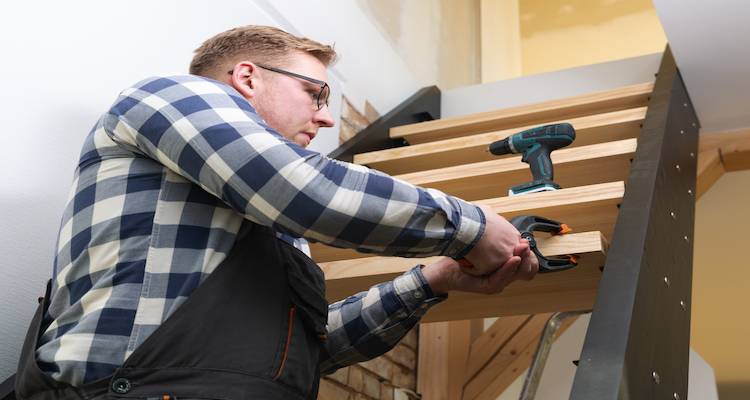
Reinstalling Your Handrail
Replacing stair parts is an efficient way to update your home without causing too much disruption or expense. Depending on the type of staircase you intend to update, replacing the handrail may be all that is required to refresh a tired-looking staircase.
Try replacing worn treads or risers with wooden stair-clad treads and risers. Stair cladding is the most recent innovative solution for homeowners looking to convert their staircase without buying and installing an entirely new staircase.
Instead, use high-quality stair-clad products and basic DIY skills to create the oak staircase look.
Painting
Paint the treads, risers, spindles, newel posts, and/or handrails of your staircase to give it a new look and life. Before applying new paint, sand down the wood surface to remove any existing varnish or paint and then utilise a stain-blocking primer to seal any knots.
For the best results, apply two coats of semi-gloss. A carpet runner can be an excellent solution for your stairwell renovation needs.
Make Use of Carpet
Another option is to cover up your worn-out stairwell with carpet. With various styles and colours to choose from, carpet can be used to make a bold statement that guests will remember.
Fitting a runner section of carpet down the centre and then painting/varnishing exterior sections works wonderfully if your treads and risers are in good condition.
To deal with the high traffic volume that stairs are typically associated with, we recommend using a high-quality, hard-wearing underlay or carpet such as coir or sisal.
Pale-coloured carpets brighten up living spaces but make most stains difficult to remove. Therefore, a grey colour may be more appropriate. Alternatively, use stripes to make your staircase appear longer.
Paint The Stairwell
Paint can be an inexpensive way to improve the appearance of a tired-looking staircase. However, before painting, it is critical to prepare the stairs. We recommend you start by cleaning up any debris and then sanding the areas you intend to paint until the wood is nice and clean.
Ensure the paint you use is floor-rated; the higher the quality, the better. There is no definite answer regarding the colour you use; we discovered that dark colours are the best at concealing dirt and marks. A final coat of clear urethane is recommended for added durability.
Can I Renovate a Staircase Myself?
A staircase refurbishment job will almost always necessitate specialised tools, skills, and experience. Of course, this assumes that if you have the necessary skill set, you should leave it to a professional. However, depending on your DIY skills and abilities, you may be able to tackle some jobs. Here are a few examples of these tasks.
Staircase Painting
If you want to enhance the aesthetic appeal of your asset and add a touch of modernisation, a fresh coat of paint might do the trick. But, first, make sure you've thoroughly sanded the surfaces to eliminate any existing varnish or paint.
Risers Or Loose Threads
If you are not a qualified carpenter or joiner, consult with an expert about any loose or worn treads or risers. This is simply to ensure the safety of your staircase. After the repairs have been completed, you can now decide on any finishing touches for your staircase design.
Cladding On Stairs
If you want a wooden finish for carpeting, stair cladding is the way to go. It is visually appealing and provides an excellent cosmetic solution for dull treads and risers. In addition, cladding completely transforms your staircase without needing to replace the entire unit.
Although some of the work can be done independently, hiring a professional is best to avoid disappointment or extra costs. You can begin budgeting for the project if you know some of the costs you're likely to incur for a replacement staircase. It's also a good idea to get quotes from other local contractors.
Building Regulations & Planning Permission for Renovating a Staircase
Building regulations must be followed when adding or changing staircases. Consider the possibility of anyone falling from poorly constructed stairs; you can see why this is an important area where control is required.
If you are renovating a current staircase that does not meet current regulations, you should be able to replace it with the same (or better) staircase when measured against regulations.
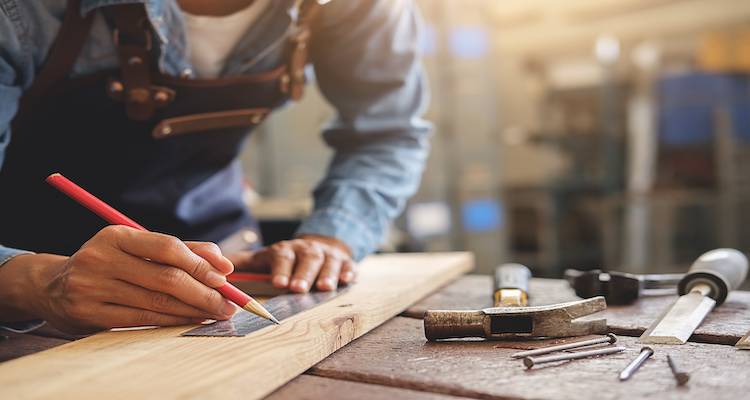
First, there must be enough headroom for a normal-sized person to climb stairs easily. According to the regulations, there must always be at least 2 metres above the pitch line.
Minimum and maximum stair and stair part heights and pitches This rule can be relaxed in loft conversions because there is usually a lack of headroom. When there is a slanted roof above the ceiling, the lowest height can be reduced to 1.9 metres or 1.8 metres at the shoulder or side of the stairs:
The stairs pitch or angle cannot exceed 42°. This means that the run or length of the stairs will always be greater than 2.2 metres in a normal case (where there are at least 2 metres of headroom).
Lofts have special benefits, such as Space Saving Stairs (or Alternating Tread Stairs can be used). These must have at least 2 metres of headroom and non-slip coatings, among many other requirements.
Leave enough space to enter and exit the stairs – at least 600mm is recommended. The landings must be at the top and bottom of the staircase and at least the width of the stairs.
The width of the stairs is not limited, though it is unexpected for a staircase and be less than 800mm wide (or 600mm for loft staircases). They are typically 860 mm wide. When doors open out onto a landing, there must be at least 400mm of space available when the door is open.
To keep the steps from becoming too difficult to climb, the highest rise, or vertical distance between every step, is 220mm. Therefore, it cannot be less than 190mm.
Measurements for the Staircase Handrail Parts
Regarding safety, the handrail is an essential component of the staircase. As a result, some very clear rules about what is and is not permitted. Check out our project for more information on stairwell handrails.
Handrails are required if the stairs extend beyond 600mm. If you can fall 600mm or over from a staircase or landing, you should be protected with a balustrade.
On both the landing and the stairs, handrails must extend beyond 900mm. If the staircase is in a public setting, the handrails on landings should be a little higher, but this does not apply to domestic dwellings.
A 100mm sphere should not be able to pass through the spindles that prevent people from falling below the handrail.
Types of Staircase Renovations
Painting a Staircase Cost
The cost can quickly add up when painting the staircase, the multi-angled existence of stairway design and construction.
On average, painting a staircase with minor preparation costs between £350 and £450—a professional stairway painting task such as priming and painting a 63.5 m2 stairwell. A stairway with stairways or balusters costs about £400 for the average homeowner.
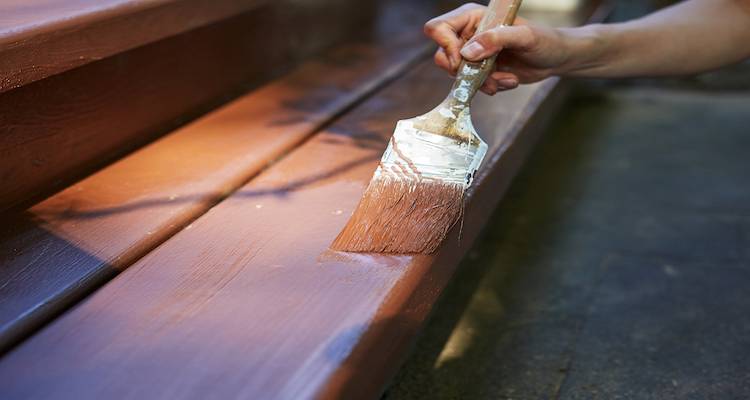
To prime and paint one staircase and cover 74.5 sq. ft. of land, the cost of adding a single colour of paint to a 52 sq. ft. stairway with handrails can vary from £225 to £700.
Each post will range in price from £3 to £17 per linear foot. Most stairwells have one or two bottom posts measuring 36 to 42 inches. Posts are an essential component of a safe and visually appealing stairway.
As part of stairway painting projects, these posts are frequently painted. To avoid paint drips on the rest of the stairwell, painters must cover it all around it. Several coats are taken to obtain nice, smooth colour. Because posts are smaller than walls and stairs, painters apply paint with a brush.
A professionally painted staircase costs between £4 and £12 per linear foot. Stair railings are typically 5 to 10 feet long and run the entire length of the staircase. The cost of the painting project may vary if a specific type of paint is required or if the railing has an intricate design that necessitates small brushes and more time.
Pros
- ✔ Easy to do
- ✔ Simple and Effective
Cons
- ✖ Can take more time
New Bannister Cost
Whether your bannister is in poor condition or you simply want to update it, you should know how much it will cost. In addition, you'll want to know whether you can do it yourself or if you should hire a professional.
If your staircase has wet or dry rot because of an underlying damp problem, you may only need to repair and replace loose or outdated handrails and spindles. On the other hand, you might want to 'refresh' your stairwell. In that case, a fresh coat of paint or a new carpet installation will suffice.
A new bannister is not cheap on average. Bannisters are built to exact specifications that must comply with Building Regulations. Furthermore, due to the regulations, stairs should be installed by experts.
As a result, neither constructing nor installing stairs is a task for an inexperienced do-it-yourself. Even fixing a bannister, you should leave it to a professional because understanding building techniques are essential before safely repairing one.
The cost of construction and installation will vary depending on size, style, and material. However, depending on how complex the design or placement turns out to be, the overall cost could be more than £5,000 or more.
For example, a timber staircase, glass or metal bannister, or a combination of more than one material in the same staircase can be made from different materials.
Pros
- ✔ Freshens up your staircase
Cons
- ✖ More Expensive
New Stair Carpet Cost
Carpeting can improve the functionality of builder-grade stairs (stairs that exist solely to move people up and down, with no regard for aesthetics). Unattractive stains are difficult to repair because they do not lend themselves to painting. Carpet works wonders on these stairs.
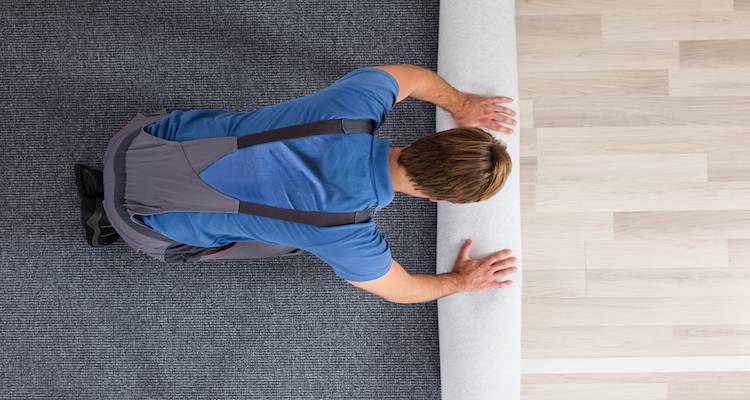
Carpeting will ruin beautiful hardwood stairs because the tack strips must be nailed down, creating holes in the wood.
The type of carpet and the material used can significantly impact the price. The underlay has a minor cost impact but should not be overlooked because it affects the feel and life of the carpet.
Pros
- ✔ Comfort feeling
Cons
- ✖ Expensive
Hiring Contractors for Renovating a Staircase Checklist
There are a few things to think about before hiring a staircase renovator. We've put together a checklist of things to look for when looking for a staircase renovator specialist.
- Qualifications – Depending on the tradesman hired, qualifications may include CSCS certification, City and Guild levels, or even college-level qualifications such as HNCs
- Insurance is the most important factor to consider when hiring any tradesman. Check that they have at least third-party liability insurance that covers building work. At the very least, you should look for a tradesman with a personal injury, property damage and works guarantee insurance
- Previous experience – Evidence of previous work is also important to consider when hiring a tradesman. If they have previous client references, photos, or a portfolio of their work, it will demonstrate that they are proud of the level of skill they can provide
- Guarantees – Does the tradesman provide any type of guarantee for the work they will perform? Most will offer in some way to ensure that you are satisfied with the work before they leave. However, looking for a tradesman who offers a five-year or longer guarantee may be worthwhile. Then, if any problems arise in the future because of flaws in the construction process, you are covered, and they will correct their mistakes at no cost to you
FAQs
How much is a new staircase?
How do you paint a staircase?
- Check for nails and lay dust sheets
- Sand down the stairs
- Fill in any holes
- Make sure stairs are free of dust
- Paint with primer
- Undercoat treads, rises, and sides
Is it easy to change a staircase?
Does a fresh staircase add value?
When should I renovate my staircase?
Sources
https://propertyworkshop.com/carpentry/staircase-refurbishment-cost-uk/
https://designmystairs.co.uk/2021/09/16/how-much-does-a-staircase-refurbishment-cost/
https://www.blueprintjoinery.com/blog/how-to-refurbish-your-staircase-on-a-budget/
https://www.stairbox.com/blog/5-steps-to-renovating-your-staircase/
https://www.diydoctor.org.uk/blog/2017/02/staircase-regulations/
https://www.parkersproperties.co.uk/news/stair-renovation-guide
https://www.proficiencyltd.co.uk/house-renovation-london/costs/staircase.html



